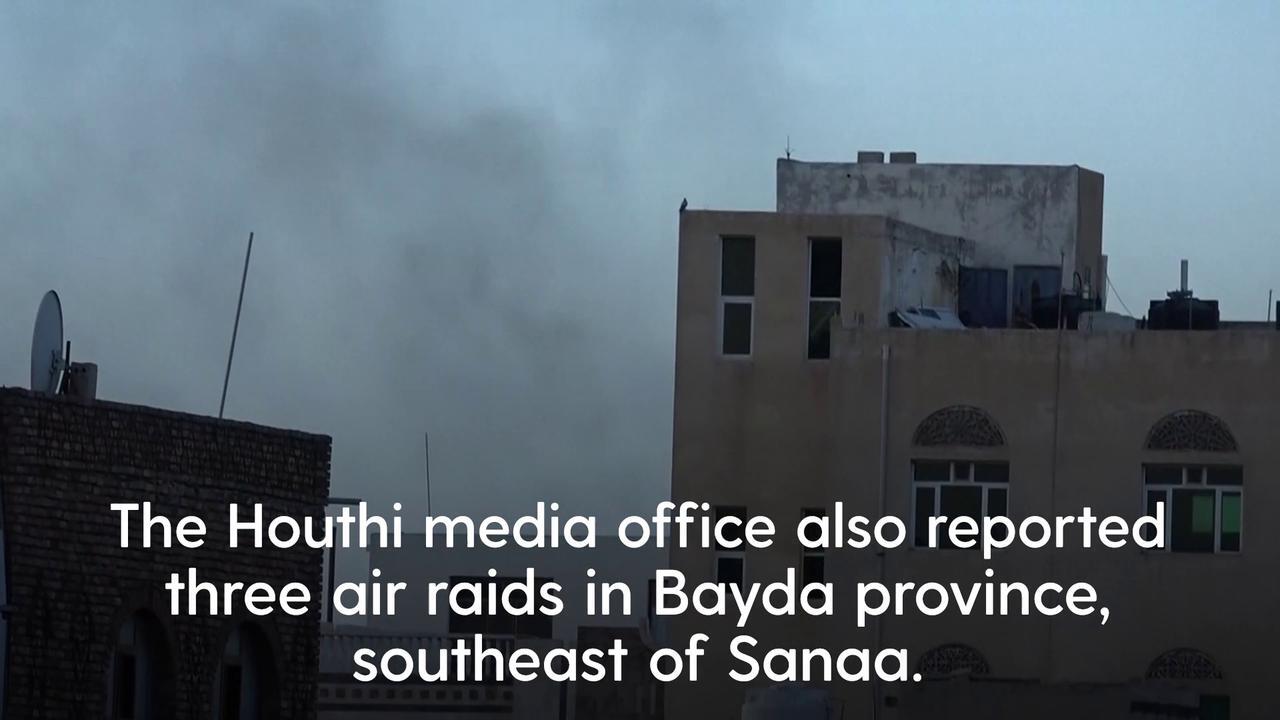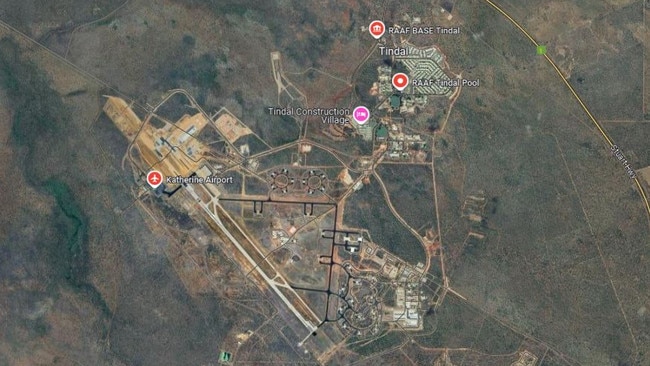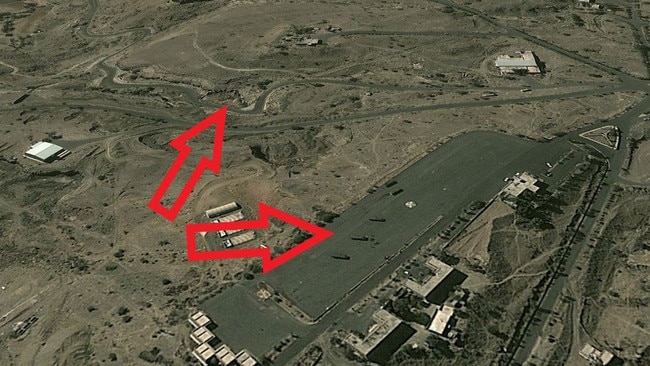‘Plenty of speculation’: Mystery over Australia’s top-secret move
International experts are “unpicking bureaucratic word games” to uncover whether Australia was involved in a high-profile military move.

Innovation
Don't miss out on the headlines from Innovation. Followed categories will be added to My News.
Just how big a role did Australia play in supporting US B-2 Spirit stealth bomber raids on Yemen last week?
The Australian Department of Defence has confirmed it provided “access and overflight for US aircraft in northern Australia” as part of the October 16-17 strikes against Houthi ballistic missile sites.
But international analysts are unpicking bureaucratic word games to understand whether or not that included United States Air Force (USAF) strategic bombers.
An ADF spokesperson went on to specify that B-2s were not “operating” out of the Northern Territory’s Tindal Royal Australian Air Force (RAAF) military air base, but cited operational security in not revealing any further details.
B-2 Spirit wheels have met pavement in Australia, launching the 2024 BTF mission and joint force integration with our Australian counterparts.
— Whiteman AFB (@Whiteman_AFB) August 17, 2024
📷 SSgt. Whitney Erhart#BomberTaskForce#BTF#bomber#Assurance#readiness@AFGlobalStrike | @PACAF | @AusAirForce | @usairforcepic.twitter.com/57kiotLYge
“There has been plenty of speculation that B-2s at least used Tindal to recover to, landing there after the Yemen raid,” analyst Thomas Newdick states in The War Zone blog.
“That remains possible since the later Australian Department of Defence comment was in response to a question as to whether the stealth bombers were operating out of the base (ie taking off for the raid) as opposed to landing there afterward.”
The Pentagon states it struck five underground targets at the capital city of Sanaa and the Houthi stronghold of Saada. But the exact locations were not identified.
The “precision air strikes” were part of efforts to stop the terrorist group’s “reckless and unlawful attacks” on international shipping lanes in the Red Sea and Gulf of Arabia, US Central Command stated.
But Houthi long-range ballistic missiles have also contributed to “Axis of Resistance” drone and missile strikes against Israel.

The Pentagon has not detailed what weapons were used. But international analysts believe these likely included the GBU-57 Massive Ordnance Penetrator. This 13.5-tonne “bunker buster” bomb can only be carried by the 31-year-old B-2 Spirit and 69-year-old B-52 Stratofortress.
“This was a unique demonstration of the United States’ ability to target facilities that our adversaries seek to keep out of reach, no matter how deeply buried underground, hardened or fortified,” US Defence Secretary Lloyd Austin said.
Stepping stone Down Under
“It may be the case that one or more Australian bases were made available as an alternative landing site, after the mission,” speculated Newdick.
“If the flight was direct, it would have literally flown around the world.”
The basic assumption is that the flying wing bombers flew out of Whiteman Air Force Base in Missouri. This is where all 20 of the B-2 Spirit are permanently stationed. About half are operational at any given time.
But the B-2 is believed to have a maximum operational range of about 11,000km without refuelling. And the distance to the Yemen capital of Sanaa is 12,600km – as the crow flies.
This indicates the bombers had to refuel – either by air or on land – at least twice to complete the round trip.

“Even if B-2s didn’t make use of Australian bases for the raid, it seems that US tankers did, which would explain references to “access and overflight for US aircraft in northern Australia,” Newdick added.
He said photos and satellite images revealed KC-135 Stratotankers and KC-46 Pegasus tankers on the ground at Cairns Airport in Queensland and more KC-135s at RAAF Amberley soon after the mission.
Open Source Intelligence (OSINT) enthusiasts have not been able to locate B-2s in Australia during the period of the raids against Yemen. But the US has access to various ADF air bases – including reserve airfields in northern Western Australia.
US B-2 and B-52 bombers are becoming an increasingly common sight in Australia.
The nuclear-capable B-2 was last in Australia in August.
Three of the aircraft visited Amberley as part of a deployment exercise. One went on to fly across Australia to visit the US Indian Ocean island base of Diego Garcia.
The US is contributing $665 million to upgrade defence facilities at the Northern Territory’s RAAF Tindal air base. Work will include extending concrete parking aprons and expanding fuelling and maintenance facilities to accommodate up to six strategic bombers and their support aircraft at any one time.
“What this is doing is allowing us to do a much greater range of activities and operations and exercises with our partners,” Minister for Defence Richard Marles said in August.
Has one such “operation” since taken place?

“It remains to be seen whether RAAF Base Tindal or any other base was used for the first time by B-2s conducting combat operations, but the fact that Australia was used to support air operations over Yemen, in and of itself, is a significant development, at a time of increasing military co-operation with the United States,” concluded Newdick.
Busting bunkers
“US forces targeted several of the Houthis’ underground facilities housing various weapons components of the types the Houthis have used to target civilian and military vessels throughout the region,” US Air Force General Pat Ryder said shortly after the attack.
Houthi rebels have attacked more than 80 cargo vessels since the outbreak of hostilities following the Hamas terror attack on Israeli-occupied territory on October 7 last year.
“We struck exactly what we intended,” he said.
“There will continue to be consequences for their illegal and reckless attacks, which put innocent civilian lives and US and partner force’s lives at risk.”
Houthi-controlled media has confirmed positions in and around Yemen’s capital, Sanaa, and its stronghold of Saada were hit.

Three previously identified underground sites are likely to have been among the targets. These are the Houthi missile force facilities at Jabal Attan, Hal Hafa and Nandan.
Western analysts have been tracking the development of these and other sites into a sophisticated network of large underground facilities to protect their missile launchers.
“While the Houthis used caves and simple tunnels in their earliest days as an armed group, more recently, they have pursued much larger installations, refurbishing both pre-war Yemeni Army tunnel systems and building entirely new underground facilities,” said International Institute for Strategic Studies (IISS) analyst Fabian Hinz.
“The construction efforts illustrate that even before the military confrontation with the US and allied forces, the Houthis were preparing for, and hardening themselves in case of, future conflict.”
Unlike Hamas and Hezbollah, which build concealed tunnel networks, Hinz said the Houthis have adopted Iran’s tactic of building large complexes capable of receiving heavy vehicles – including mobile ballistic missile launchers.
Several such missiles were caught on 2011 satellite imagery at Jabal Attan in Sanaa. A cliff face just south of the missile depot has since been excavated as a protected weapons cache.
“The raid was a very clear signal to Iran that the United States is uniquely well equipped to target critical facilities,” wrote Newdick.
Iran unveiled its new Oghab-44 underground air base last year. The facility northeast of Bandar Abbas, near the Strait of Hormuz, houses its ageing fleet of F-4 Phantom strike fighters and support structure from air attack.
It also houses much of its nuclear research and uranium refinement program in underground facilities.
The 30,000lb (13.5-tonne) GBU-57 MOB contains 2.4 tonnes of explosives. Most of the remaining weight is in the hardened steel designed to penetrate 61m of reinforced concrete or 38m of solid rock. The B-2 can carry two.
But the US has other deep-penetration weapons. These include the precision-guided BLU-109 Joint Direct Attack Munition. The B-2 can carry 16 of these 2000lb (1-tonne) bombs, but they’re small enough to be carried by a greater variety of aircraft.
Jamie Seidel is a freelance writer | @JamieSeidel
Originally published as ‘Plenty of speculation’: Mystery over Australia’s top-secret move





